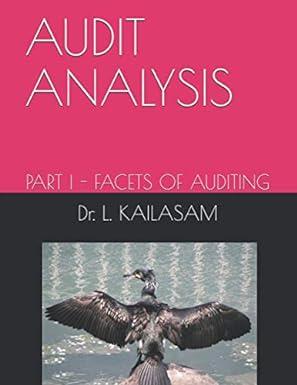Answered step by step
Verified Expert Solution
Question
1 Approved Answer
Prepare a statement of cash flows for the year ending December 31, Year 2, using the direct method of reporting cash flows from operating activities.
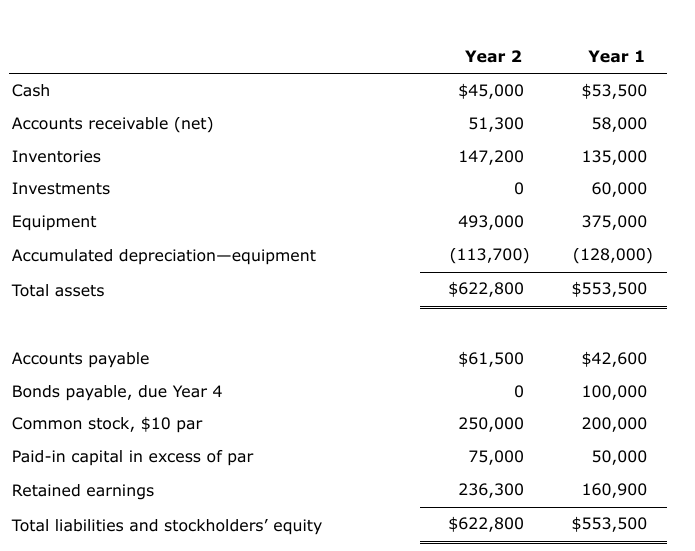
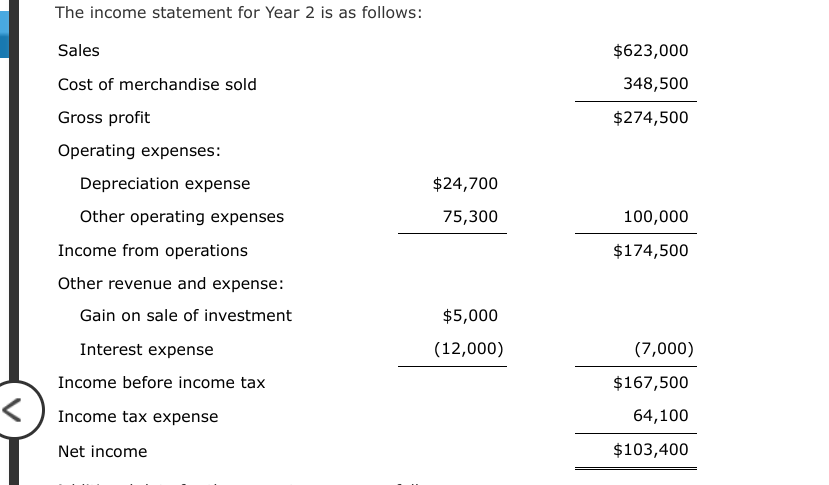
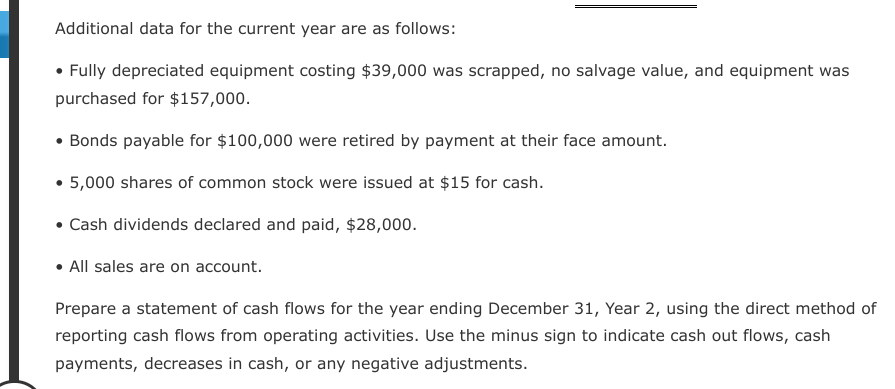
Prepare a statement of cash flows for the year ending December 31, Year 2, using the direct method of reporting cash flows from operating activities. Use the minus sign to indicate cash out flows, cash payments, decreases in cash, or any negative adjustments.
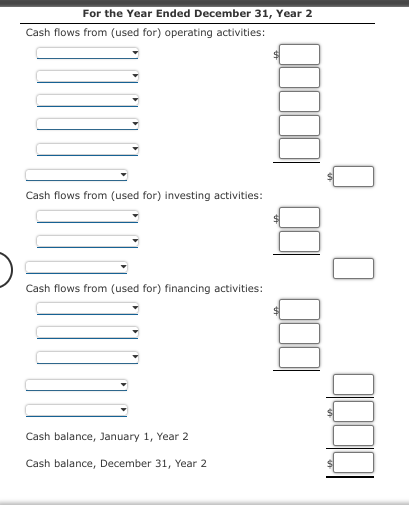
\begin{tabular}{lrr} & Year 2 & Year 1 \\ \hline Cash & $45,000 & $53,500 \\ Accounts receivable (net) & 51,300 & 58,000 \\ Inventories & 147,200 & 135,000 \\ Investments & 0 & 60,000 \\ Equipment & 493,000 & 375,000 \\ Accumulated depreciation-equipment & (113,700) & (128,000) \\ \hline Total assets & $622,800 & $553,500 \\ \end{tabular} Accounts payable Bonds payable, due Year 4 Common stock, \$10 par Paid-in capital in excess of par Retained earnings Total liabilities and stockholders' equity \begin{tabular}{rc} 236,300 & 160,900 \\ \hline$622,800 & $553,500 \\ \hline \hline \end{tabular} The income statement for Year 2 is as follows: Additional data for the current year are as follows: - Fully depreciated equipment costing \$39,000 was scrapped, no salvage value, and equipment was purchased for $157,000. - Bonds payable for $100,000 were retired by payment at their face amount. - 5,000 shares of common stock were issued at $15 for cash. - Cash dividends declared and paid, \$28,000. - All sales are on account. Prepare a statement of cash flows for the year ending December 31, Year 2, using the direct method of reporting cash flows from operating activities. Use the minus sign to indicate cash out flows, cash payments, decreases in cash, or any negative adjustments. For the Year Ended December 31, Year 2 Cash flows from (used for) operating activities: Cash flows from (used for) investing activities: Cash flows from (used for) financing activities: Cash balance, January 1, Year 2 Cash balance, December 31 , Year 2 \begin{tabular}{lrr} & Year 2 & Year 1 \\ \hline Cash & $45,000 & $53,500 \\ Accounts receivable (net) & 51,300 & 58,000 \\ Inventories & 147,200 & 135,000 \\ Investments & 0 & 60,000 \\ Equipment & 493,000 & 375,000 \\ Accumulated depreciation-equipment & (113,700) & (128,000) \\ \hline Total assets & $622,800 & $553,500 \\ \end{tabular} Accounts payable Bonds payable, due Year 4 Common stock, \$10 par Paid-in capital in excess of par Retained earnings Total liabilities and stockholders' equity \begin{tabular}{rc} 236,300 & 160,900 \\ \hline$622,800 & $553,500 \\ \hline \hline \end{tabular} The income statement for Year 2 is as follows: Additional data for the current year are as follows: - Fully depreciated equipment costing \$39,000 was scrapped, no salvage value, and equipment was purchased for $157,000. - Bonds payable for $100,000 were retired by payment at their face amount. - 5,000 shares of common stock were issued at $15 for cash. - Cash dividends declared and paid, \$28,000. - All sales are on account. Prepare a statement of cash flows for the year ending December 31, Year 2, using the direct method of reporting cash flows from operating activities. Use the minus sign to indicate cash out flows, cash payments, decreases in cash, or any negative adjustments. For the Year Ended December 31, Year 2 Cash flows from (used for) operating activities: Cash flows from (used for) investing activities: Cash flows from (used for) financing activities: Cash balance, January 1, Year 2 Cash balance, December 31 , Year 2
Step by Step Solution
There are 3 Steps involved in it
Step: 1

Get Instant Access to Expert-Tailored Solutions
See step-by-step solutions with expert insights and AI powered tools for academic success
Step: 2

Step: 3

Ace Your Homework with AI
Get the answers you need in no time with our AI-driven, step-by-step assistance
Get Started


